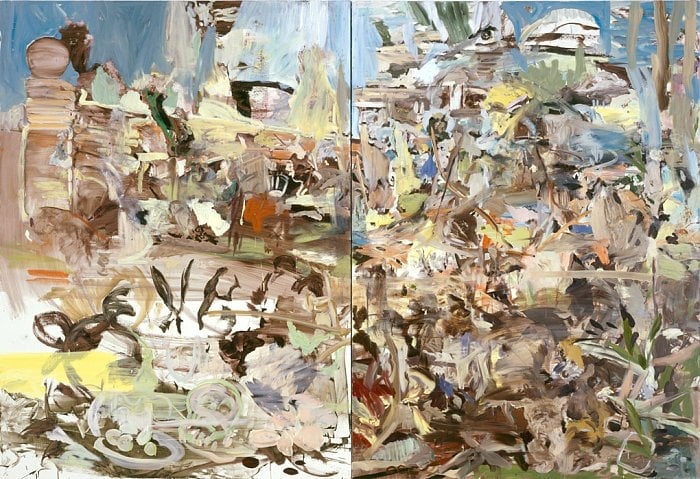
In a densely packed week of contemporary art auctions staged in London to accompany the Frieze Week art fairs, Phillips found a spot on Friday afternoon, just ahead of Christie’s main sale. Anticipating larger crowds than usual, the auction house moved from the basement to the more expansive ground-floor viewing room.
The move certainly didn’t hurt. The £23.9 million ($31.6 million) result was not a record for Phillips London, but it was a solid and credible showing. Including two lots that were sold privately, 34 of the 36 lots—or 94 percent—were sold. The total fell within estimate and was Phillips’s third-highest for a contemporary sale in London.
Of the eight lots that were guaranteed, four attracted competitive bidding—a threshold Phillips has to cross more often to become a serious player. These four included the top lot, Sigmar Polke’s dotted Tänzerin (1994), which sold under the watchful eye of its elderly German consignor for a mid-estimate £3.4 million ($4.4 million). And Adrian Ghenie’s sinister The Collector 4 (2009) from the Katayama collection saw bidding from art advisor Nicolai Frahm before selling above estimate for £1.7 million or $2 million. (Final prices include the buyer’s premium; pre-sale estimates do not.)
Sigmar Polke, Dancer (1994). Courtesy of Phillips London.
But other guaranteed lots revealed the market’s weak spots. Ai Weiwei’s Map of China (2008) was bought at Christie’s in May 2016 for a double-estimate $2.5 million. But on Friday, it sold below estimate, for just £650,000 ($789,000). Another Ai sculpture, Coca-Cola (2012), was unsold at Phillips in May 2015 with a guarantee and a $400,000 estimate. Yesterday, it returned to the podium as property of Phillips and sold for £240,000 ($297,000).
Ai Weiwei, Coca-Cola (2012). Courtesy of Phillips London.
Contradicting the perception that blue-chip contemporary work increases in value, unguaranteed works that had recently been on the market tended to register no gain. Andy Warhol’s Knives (1982) was bought at Phillips in New York for $3.4 million in 2011; on Friday, it sold for £2.6 million ($3.5 million). A Richard Prince photo-collage joke painting bought in London nearly six years ago for £481,250 hammered down for £460,000 ($601,000) before the buyer’s premium was added.
The winners of the afternoon were selling Cecily Brown’s Park (2004), which was bought in the same room for £421,250 ($550,423) in 2011. On Friday, the work sold for £849,000 ($1.11 million) to an Asian phone bidder against bidding from San Francisco dealer John Berggruen. Georg Baselitz’s Dreimal (1989), which was bought at Christie’s New York in 2014 for $185,000, returned £261,000 ($344,520).
Hurvin Anderson,
Peter’s Series: Back (2008). Courtesy of Phillips London.
Hurvin Anderson’s Peter Series: Back (2008) was shown the year it was made at Anthony Meier’s San Francisco gallery back when primary-market prices were still under $50,000. Coming from an unnamed US collector, the work held the artist’s record—albeit briefly—selling for £1.8 million ($2.4 million) to an Asian buyer. (The record was broken at the Christie’s sale a few hours later when Anderson’s Country Club: Chicken Wire sold for £2,648,750 or $3.5 million.)
“We were concerned about the selectivity of the market after yesterday, but in the end were delighted,” said Phillips chairman and CEO Ed Dolman, alluding to Sotheby’s sale. “The sale showed what we could do with material that was fresh to the market,” he added, referring to the Polke, the Anderson, and a Basquiat Untitled work from 1984, which was sold by the artist’s estate for £1.6 million ($2.1 million) against bidding from London dealer Inigo Philbrick.
Jean-Michelle Basquiat, Untitled (1984). Courtesy of Phillips London.